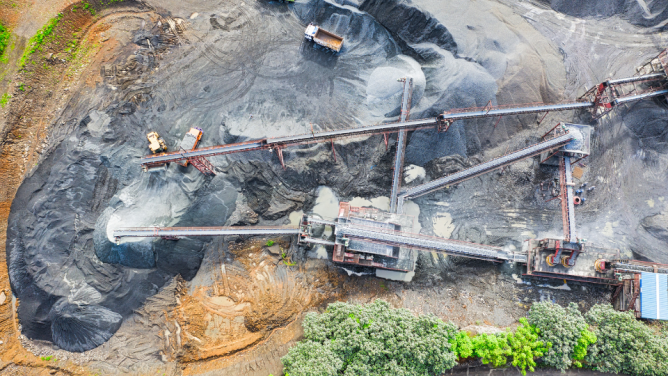Every year, 50 billion tons of sand are mined, threatening shortage of this raw material -of which the construction sector is the largest consumer- encouraging mafias and destabilizing eco-systems. Pressure on steel, copper and plastic is driving prices soaring today. Concrete is responsible for 5 to 10% of the world’s CO2 emissions… There’s no need to carry on with the litany to figure out what’s at stake: building materials must reinvent themselves, limit the pollution induced by their exploitation and adopt circularity. With the COVID-19 crisis, the health aspect has been added to the list of things to tackle, with virucides a new appearance on the spec list. At the same time, reducing volatile organic compounds (VOCs), dust and the risk of mold have become all the more important as we spend more time under house arrest! Faced with the pressing need, manufacturers and start-ups are getting in on the action and showing remarkable dynamism. From optimizing what already exists to low-tech solutions and projects worthy of science fiction, the world of materials is changing.
A matter of emissions
Concrete is the second most used mineral substance in the world after water. The reason is simple: it’s an excellent building material. “Concrete is in fact a very low impact material. The reason concrete has a big carbon footprint is that there are just such huge quantities used,” explains Karen Scrivener, head of the Laboratory of Construction Materials at the EPFL. The challenge is not to do without concrete, but to improve its performance. Vinci intends to use low-carbon concrete on 90% of its sites by 2030. Exegy offers a range of concretes which will reduce CO2 emissions by around 70%. To achieve this, concrete manufacturing processes have been transformed, doing without clinker – whose production alone is responsible for 60% of total cement emissions. In France, the cement manufacturer Hoffmann Green Cement Technologies has already opened two factories for producing cement without clinker.
Circularity is opening us up to whole new ways of producing materials. The Canadian startup Carbon Upcycling Technologies – incubated as part Léonard’s Catalyst program – converts CO2 emissions into solid products which have a variety of uses. From concrete additives to polymers and anti-corrosion coatings, CO2’s potential as a raw material is in its infancy.
New materials, new properties
Beyond optimizing production processes, the world of materials is developing new properties. For the construction sector, this is the opportunity to radically rethink traditional uses. The development of nanoparticles is making it possible to imagine semi-transparent glass capable of generating energy. Before showing sufficient yields to cover buildings’ facades, they’re proving pretty useful in agricultural greenhouses. While we’re on the topic of facades, buildings are now capable of combating pollution passively thanks to self-cleaning windows. Neolith is developing a treatment made from water and titanium dioxide nanoparticles that cleans surfaces by way of photocatalysis and superhydrophilicity chemical processes. Many others are also adapting the properties of traditional materials to create new applications. Take Mighty Buildings, whose Light Stone Material is a composite material similar to cement and has an ultra-fast setting time which is particularly suitable for 3D-printed buildings. Finally, when it comes to super resistance, MIT has developed a graphene-based material 20 times less dense and 10 times more resistant than steel!
Inspired by the living
Innovation is alive – in both the figurative and literal sense. Bio-sourced materials are championing a return to low-tech, natural solutions and biomimicry. Wood is acting as a figurehead in the domain. Thanks to the development of cross-laminated timber (CLT), wooden constructions can now afford to consider more daring buildings. A good example of this is La Cité du Vin in Bordeaux, which was created by Arbonis, the Vinci subsidiary dedicated to wood. Wood is a great material for unexpected hybridizations. This is the case with lightweight, bio-sourced, wood-based concretes. The cement manufacturer Vicat has launched Naturat, a wood-based concrete intended to meet the goals of the RE2020. Some materials like Woodoo, go as far modifying the structure of wood and transforming its properties. Translucent and resistant, the startup’s product may currently seem more intended for interiors or technology, but shows great promise in construction.
Beyond wood, research programs and entrepreneurs are being inspired by natural processes and biomimicry. Self-healing concretes repair their cracks thanks to fungi. The Dutch start-up Basilisk is already marketing a product developed with the University of Delft, which can repair cracks up to 1mm. Still focussing on fungi, mycelium could be the answer to a self-growing material, and the startup Ecovative is already using it to make decorative objects. Even more surprisingly, the startup chipsboard is developing bioplastics from food waste! Potato peels have never been more useful.
Health in the sights
It’s hard not to tackle the subject of materials in 2021 without addressing the health aspect. The Covid-19 pandemic has emphasized the role of materials and caused demand to explode. While copper’s virucidal properties have long been known, the metal is now facing new competition. AirLite paint is backed by the European Union and eliminates 99.9% of bacteria and viruses present on treated surfaces. In the same vein, Metalmark Innovations (which won Hello Tomorrow’s Smart City award, supported by Leonard) develops interior coatings which combat VOCs.
In terms of building materials, the health crisis risks putting the concept of “breathable” bricks back into the spotlight. Developed in 2015 and designed to be like small vacuum cleaners, these bricks naturally filter indoor air. Wind tunnel-tested, breathe bricks could filter 30% of fine particles and 100% of dust!


